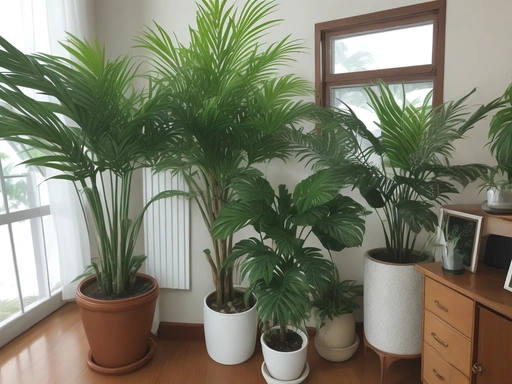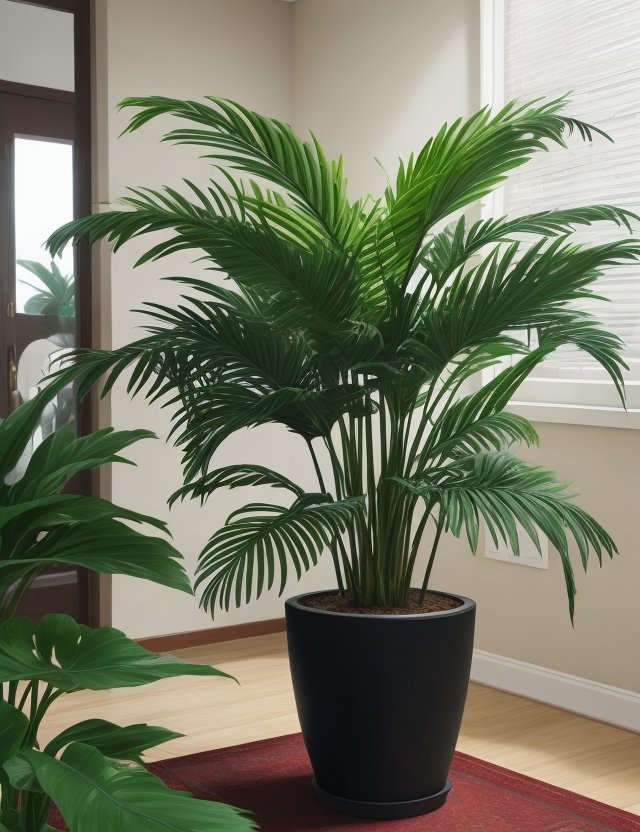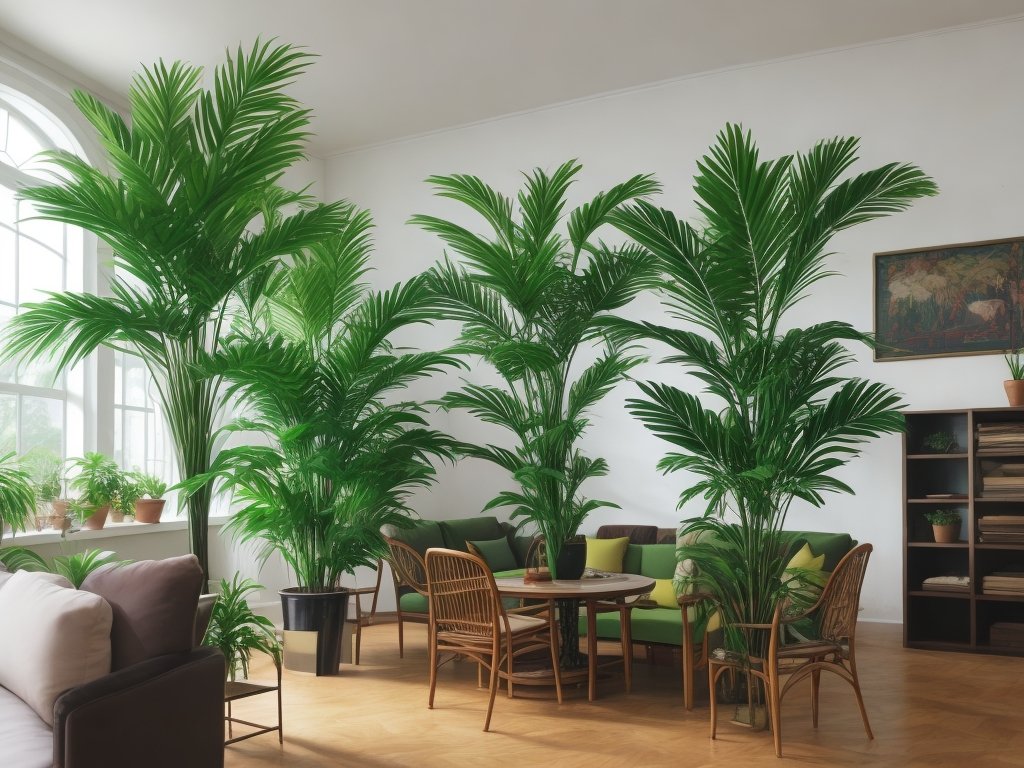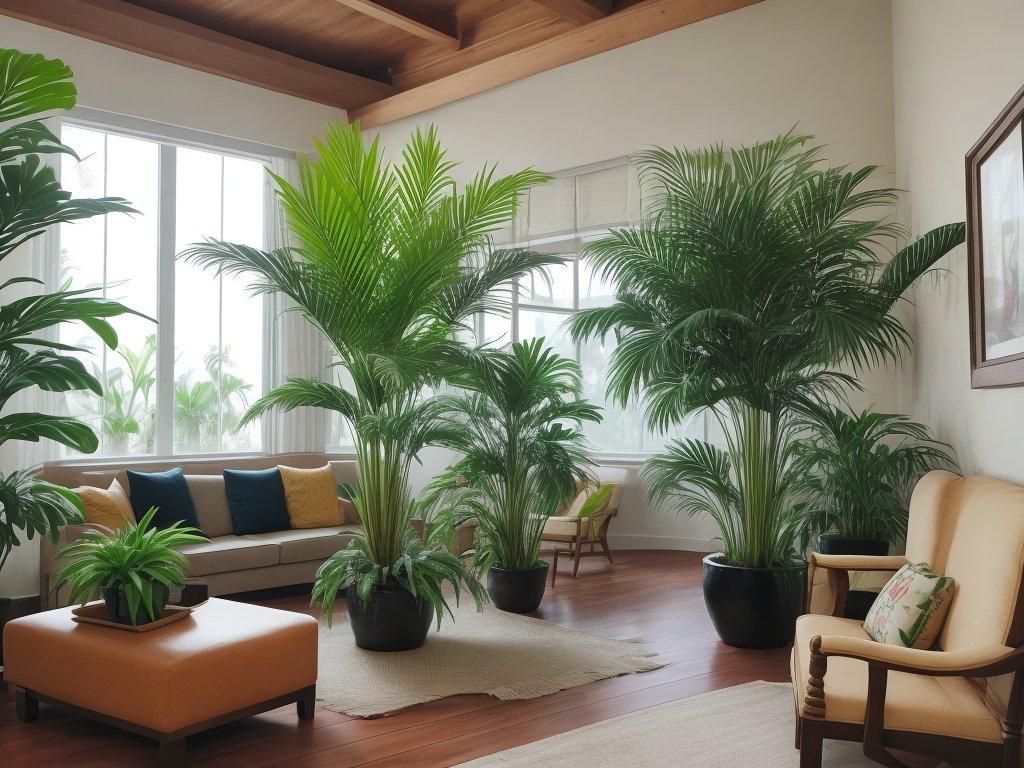Parlor Palm And The Joy Of Gardening: A Green Oasis at Home
Key Takeaways:
- Parlor palms are low-maintenance indoor plants that can thrive in various environments, making them perfect for beginner gardeners.
- Gardening, including caring for a parlor palm, can be a fulfilling and enjoyable hobby that brings a sense of joy and connection with nature.
Are you longing to bring the beauty and tranquility of nature into your home?
Look no further than the parlor palm! This charming plant not only adds a touch of green to your indoor space but also brings a sense of joy and fulfillment through gardening.
In this blog, we’ll explore the wonders of the parlor palm and discover why it’s the perfect choice for your indoor garden.
From its easy care requirements to its ability to purify the air and reduce stress, you’ll soon understand why this little plant is a must-have for any plant lover.
So, let’s dive in and uncover the secrets of the parlor palm together!
| Topic | Parlor Palm and the Joy of Gardening |
| Plant Name | Parlor Palm |
| Scientific Name | Chamaedorea elegans |
| Type | Indoor houseplant, tropical palm |
| Origin | Mexico and Guatemala |
| Height | 2-6 feet (60-180 cm) |
| Lifespan | Up to 10 years |
| Light | Indirect bright light |
| Watering | Keep soil lightly moist, not wet |
| Temperature | 65-80°F (18-27°C) |
| Humidity | Moderate, 40-50% |
| Propagation | Division, seeds |
| Benefits | Improves indoor air quality, increases humidity, adds beauty and elegance |
| Care Difficulty | Easy |
| Pros | Drought-tolerant, low maintenance, non-toxic to pets |
| Cons | Can be susceptible to pests like spider mites and scale insects |
Choosing the Right Indoor Plants for Your Home Garden
Choosing the right indoor plants for your home garden is important in creating a thriving and aesthetically pleasing indoor space.
Benefits of Indoor Gardening
Indoor gardening offers numerous benefits for both your physical and mental well-being. It enhances indoor air quality, reduces stress, and boosts your mood.
It also promotes relaxation and provides a sense of satisfaction.
Plus, growing your own plants provides a source of fresh herbs or vegetables, making your meals healthier and more flavorful.
Factors to Consider in Selecting Indoor Plants
When selecting indoor plants, consider factors such as the lighting conditions in your home, your ability and willingness to care for the plants, the available space, and any specific preferences you may have for certain types of plants.
Assessing these factors will help you choose plants that can thrive in your home environment and suit your personal preferences.
Additionally, take into account the plants’ water and humidity needs, as well as any potential toxicity to pets or children.

Introducing the Parlor Palm
The Parlor Palm, also known as Chamaedorea elegans, is a popular choice for indoor gardening.
Overview of the Parlor Palm
The Parlor Palm, also known as Chamaedorea elegans, is a popular choice for indoor gardens due to its elegant appearance and low maintenance needs.
It is a small palm that can grow up to 4-6 feet tall, with arching fronds and a bushy, clumping growth habit.
This palm is native to the rainforests of Mexico and Central America, so it thrives in warm and humid environments.
It is tolerant of low light conditions and can easily adapt to various indoor spaces.
The Parlor Palm adds a touch of greenery and tropical vibes to any home.

Reasons Why Parlor Palm is Ideal for Indoor Gardens
The Parlor Palm is perfect for indoor gardens because it thrives in low light conditions, making it suitable for homes with limited sunlight. It is also known for its air-purifying properties, improving the quality of the indoor air.
The Parlor Palm’s compact size and ease of care make it a great choice for beginners or busy individuals.
Plus, its graceful fronds add a touch of natural beauty to any indoor space.
Caring for Your Parlor Palm
To care for your parlor palm, you need to consider its light and temperature requirements, watering and humidity needs, as well as soil and fertilizer recommendations.
Light and Temperature Requirements
The Parlor Palm thrives in bright, indirect light but can tolerate low light conditions.
Avoid exposing it to direct sunlight, as it can scorch the leaves.
As for temperature, it prefers a range of 65-80°F (18-27°C).
Just make sure to keep it away from drafts or extreme temperature fluctuations.
Watering and Humidity Needs
Water your Parlor Palm thoroughly but allow the top inch of soil to dry out before watering again. Maintain a moderate level of humidity by misting the leaves or using a humidifier.
Avoid overwatering or letting the plant sit in standing water.

Soil and Fertilizer Recommendations
For your Parlor Palm, it’s important to choose well-draining soil that retains moisture but doesn’t become waterlogged. A blend of peat moss, perlite, and potting mix works well.
As for fertilizer, use a balanced, water-soluble fertilizer once a month during the growing season.
Dilute it according to the instructions on the package. Avoid over-fertilizing, as it can damage the plant.

Creating the Perfect Environment for Your Parlor Palm
To ensure the health of your Parlor Palm, provide a suitable pot and regular repotting when necessary.
Potting and Repotting Tips
Potting and repotting your parlor palm is essential for its health and growth.
Here are some tips to help you with the process:
- Select a pot: Choose a pot that is slightly larger than the current one to allow for root growth.
- Soil preparation: Use well-draining potting soil, preferably a mix of peat moss, perlite, and sand.
- Repotting process: Gently remove the palm from its current pot and loosen the roots. Place it in the new pot with fresh soil, making sure it is at the same depth as before.
- Watering after repotting: Give your parlor palm a thorough watering after repotting to help settle the soil and promote root establishment.
- Regular repotting: Repot your parlor palm every 2-3 years to ensure proper growth and prevent it from becoming root-bound.
Remember, potting and repotting are important for the overall health of your parlor palm, so be sure to follow these tips for optimal results.
Placement and Decoration Suggestions
To create an attractive display with your Parlor Palm, consider these placement and decoration suggestions:
- Placement: Choose a location that receives bright, indirect sunlight. Avoid placing it in direct sunlight as it can cause the leaves to burn. The Parlor Palm thrives in temperatures between 65-80°F (18-27°C.
- Décor: The Parlor Palm’s elegant fronds can complement various interior styles, including modern, bohemian, or tropical themes. Consider placing it on a side table, plant stand, or in a hanging basket to add visual interest to your space.
- Grouping: Create a lush and vibrant display by pairing your Parlor Palm with other indoor plants. It can be placed alongside plants of different textures and heights for a dynamic and harmonious arrangement.
- Containers: Choose a decorative pot with proper drainage holes to ensure good airflow and prevent waterlogging. Consider a pot that matches your interior decor and complements the color and texture of the Parlor Palm’s foliage.
- Decorative accents: Enhance the visual appeal by adding decorative accents such as pebbles, moss, or small figurines to the base of the pot. These can add a touch of personality and charm to your indoor garden.
Remember to regularly rotate your Parlor Palm to ensure even growth. With these placement and decoration suggestions, you can create a beautiful and inviting environment with your Parlor Palm as the centerpiece.
Common Pests and Diseases to Watch Out For
Parlor palms are generally resistant to pests and diseases, making them relatively low-maintenance plants.
However, there are a few issues to keep an eye out for.
The most common pests include spider mites, mealybugs, and scale insects.
To prevent these pests, regularly inspect your plant and wipe the leaves with a damp cloth.
As for diseases, overwatering can lead to root rot, while underwatering can cause the tips of the leaves to turn brown.
Maintaining proper watering practices is key to avoiding these issues.
Benefits of Having a Parlor Palm in Your Home
Having a Parlor Palm in your home brings numerous benefits such as air purification and increased oxygen levels, as well as stress reduction and enhanced well-being.
Air Purification and Increased Oxygen Levels
The Parlor Palm is a fantastic choice for improving air quality and increasing oxygen levels in your home.
It naturally filters out toxins and releases oxygen, creating a healthier indoor environment.
Plus, having more oxygen around can boost your mood and enhance your overall well-being.
It’s a win-win!
Stress Reduction and Enhanced Well-being
Having a Parlor Palm in your home can help reduce stress and enhance your overall well-being.
The presence of indoor plants, including the Parlor Palm, has been shown to improve mood, increase relaxation, and reduce anxiety.
Additionally, caring for plants can provide a sense of purpose and satisfaction, promoting a greater sense of well-being.
So, adding a Parlor Palm to your indoor garden can contribute to a happier and more peaceful living space.
Incorporating Parlor Palm into Your Home Décor
Incorporate the Parlor Palm into your home decor to add a touch of greenery and elegance.
Matching Different Interior Styles
Matching different interior styles can be a fun and creative way to incorporate your parlor palm into your home decor. To achieve a harmonious look, consider the following tips:
- Modern Style: Pair your parlor palm with sleek furniture, clean lines, and minimalist accessories for a contemporary feel.
- Bohemian Style: Embrace a laid-back, eclectic vibe by combining your parlor palm with vibrant colors, patterned textiles, and natural materials like rattan or wicker.
- Scandinavian Style: Create a cozy and inviting atmosphere by placing your parlor palm alongside light-colored furniture, neutral tones, and warm textures like faux fur or knitted blankets.
- Mid-Century Style: Complement your parlor palm with retro-inspired furniture, bold patterns, and statement pieces for a stylish throwback to the ’50s and ’60s.
Remember, the key is to find a balance between your parlor palm and the overall aesthetic of your space. Experiment with different combinations until you achieve a look that reflects your personal style and makes your parlor palm a standout feature in your home.
Pairing with Other Indoor Plants and Accessories
Pairing your Parlor Palm with other indoor plants and accessories can enhance the aesthetic appeal of your home decor. Some great options include:
- Spider Plant: Its cascading foliage complements the upright growth of the Parlor Palm.
- Peace Lily: The dark green leaves and white blooms create a beautiful contrast with the Parlor Palm’s light green foliage.
- Macrame Plant Hangers: These add a boho touch and allow you to showcase your Parlor Palm at different heights.
- Decorative pots: Choose pots in different colors and textures to add visual interest to your indoor garden.
Remember to consider the light and humidity requirements of the plants you’re pairing to ensure they thrive together.
Frequently Asked Questions about Parlor Palms
How fast does a Parlor Palm grow?
The Parlor Palm is known for its slow growth rate. On average, it grows about 1 to 2 feet in height over several years.
This makes it a great choice for indoor gardens as it doesn’t require constant pruning or maintenance.
Just sit back and watch it grow at its own pace!
Can Parlor Palms tolerate low light conditions?
Parlor Palms are a great choice for low light conditions.
They can tolerate and thrive in areas with indirect or filtered sunlight.
This makes them perfect for spaces that don’t receive a lot of natural light, such as north-facing rooms or offices with limited windows.
Just make sure to avoid placing them in dark corners or completely dim spaces.
Is Parlor Palm pet-friendly?
Yes, the Parlor Palm is pet-friendly. It is non-toxic to both cats and dogs.
So, you can have this beautiful plant in your home without worrying about any harm to your furry friends.
Just make sure they don’t chew on the leaves!
How often should I water my Parlor Palm?
Water your Parlor Palm thoroughly whenever the top inch of the soil feels dry. Keep in mind that overwatering can lead to root rot, so it’s better to underwater slightly than to overwater.
Ensure proper drainage and adjust watering frequency based on the humidity and temperature of your home.
Can I place my Parlor Palm outdoors?
Yes, you can place your Parlor Palm outdoors, but it’s best to keep it in a sheltered area with indirect sunlight. Too much direct sunlight can scorch the leaves.
Keep an eye on temperature changes and protect the plant from extreme weather conditions.
Final Verdict
Incorporating the Parlor Palm into your indoor garden can bring immense joy and numerous benefits. This resilient plant is easy to care for and thrives in various indoor environments.
From its air purification properties to its ability to reduce stress and enhance well-being, the Parlor Palm is a wonderful addition to any home.
With proper care and attention to its light, water, and soil needs, you can create the perfect environment for your Parlor Palm to flourish. So why not embark on the joy of gardening and let the Parlor Palm transform your home into a peaceful oasis?







